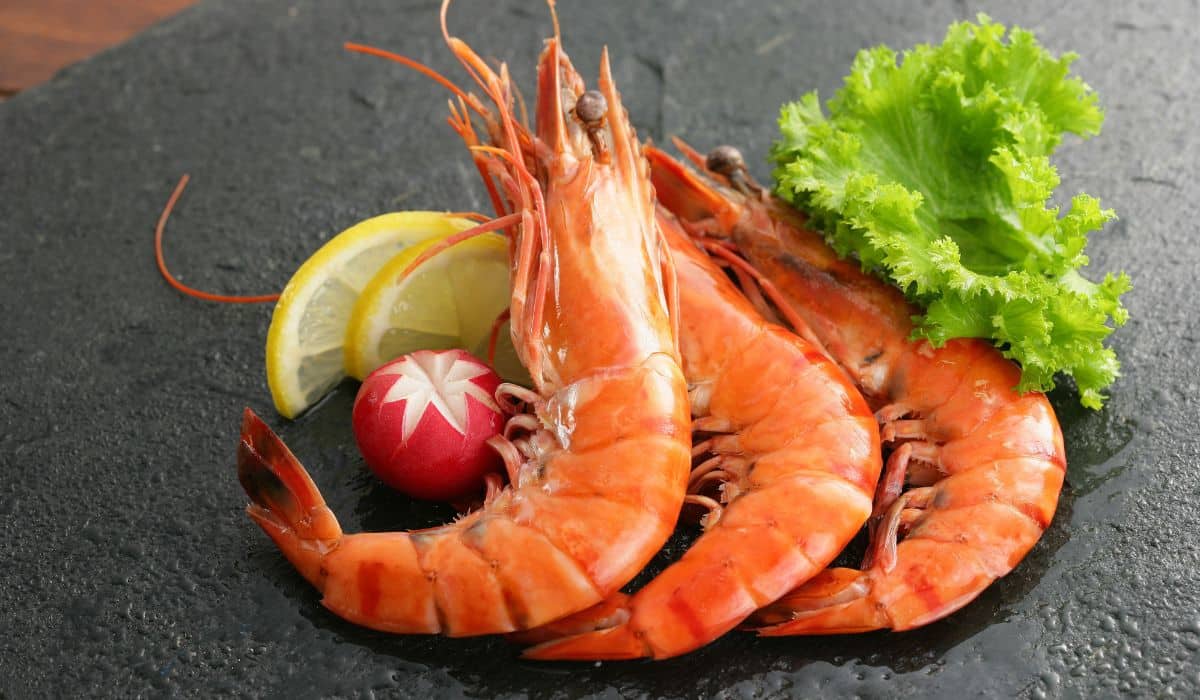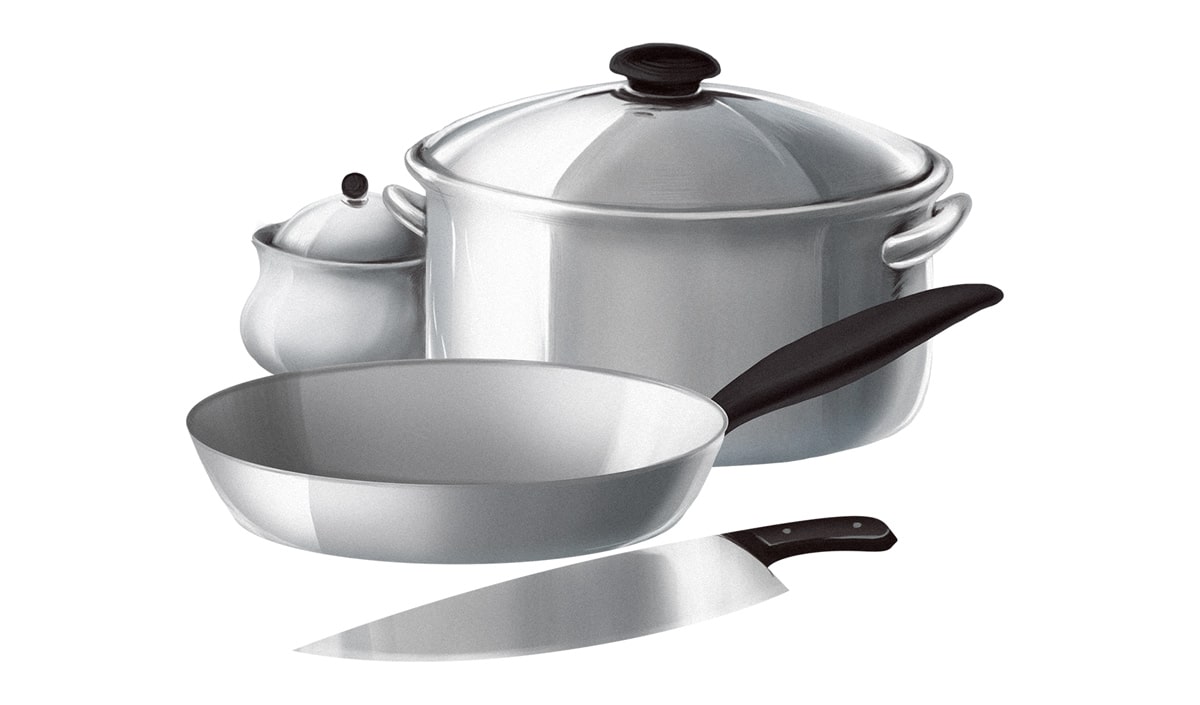
Small but mighty, shrimp are a delicious way to get some of those incredibly valuable nutrients in seafood. And as one of America’s top 3 fish, they’re certainly popular – if you’re looking for a snack-type dish to bring to a party, a shrimp ring (or some shrimp cocktail, perhaps?) is always a hit. They’re traditional for New Year’s parties, but there’s no reason you couldn’t serve them at any other time of year: dress them up with a bright red sauce and they’re ready for almost any occasion.
Shrimp Nutrition
They might not look like much, but take a look at what you get in 6 ounces of cooked shrimp (that’s about as much as you’d usually eat at a Paleo meal).
6 ounces of cooked shrimp contains:
- 36 grams of protein
- 66mg of calcium
- 14% of the DV of magnesium
- 24% of the DV of phosphorus
- 18% of the DV of zinc
- 22% of the DV of niacin
- 10% of the DV of vitamin B6
- 42% of the DV of vitamin B12
- 12% of the DV of vitamin E
- 16% of the DV of copper
- 96% of the DV of selenium
(note: you might see slightly different numbers from different places depending on whether the weight is for the entire shrimp or just the edible part. It also depends a little bit on which country the shrimp came from. These numbers are a reasonable average – considering that the RDA isn’t totally reliable anyway, this is good enough for most purposes.)
Shrimp with the shell on also have a hidden benefit that you won’t see on the Nutrition Facts panel: glucosamine. This is a protein that naturally occurs in human joints, cartilage, and connective tissue, and getting enough of it in our diet is important for keeping all of our “knobbly bits” happy and pain-free.
Unfortunately, the modern diet is glucosamine-deficient because we don’t regularly eat the joints and connective tissue of other animals. You can see how unhealthy this is if you look at the benefits of glucosamine supplements for people suffering from arthritis and other joint pain problems; in some studies it worked as well as ibuprofen and other commercial painkillers! (And as a slightly superficial bonus, it also shows some promise for treating cellulite).
You can buy glucosamine supplements at any drugstore, but most of them are just purified extracts from the shells of shrimp (or other crustaceans). So if you already have the shells anyway, why not make your own “supplement” for free? All you have to do is brew up a batch of shrimp stock: put the shrimp shells in a stock pot or slow-cooker, cover with water, and simmer for 1-2 hours. Unlike stock made from bones, shrimp stock takes very little time to cook because the shells are so thin. Strain out the shells with a colander or cheesecloth, and you’ll have a delicious and nourishing stock perfect for using in gumbo or any other seafood recipe.
The only downside is that those 6 ounces of shrimp don’t provide enough energy for a main meal – only 168 calories, and barely any fat (just 2 grams). That’s not a huge problem though, because the solution is very simple and extremely delicious: slather them with butter, or enjoy them in a spicy coconut milk sauce.
The Ethical Shrimp
No, the shrimp themselves aren’t really concerned about the nature of good and evil. It’s that the shrimp production chain – the way the shrimp get from the ocean to your plate – is full of human rights abuses and environmental danger. So if you’re going to eat shrimp, it’s important to get the right kind.
For one thing, the vast majority of cheap shrimp in the world is produced in Thailand, often by Burmese migrant laborers subject to a horrifying number of human rights abuses. This interview with several labor activists and workers details the 18-hour days, the vicious cycles of debt-slavery and abuse, and the frequent use of child labor. This is the true price of cheap imported shrimp. It’s not listed on the label, but that doesn’t mean it’s not real.
Many of the methods used to catch shrimp are also ecologically disastrous: trawling (just dragging a giant net around the sea floor and throwing out whatever the fisherman doesn’t want) destroys the ocean ecosystem from the ground up. And farming isn’t much better: shrimp farming is slowly taking its toll on mangrove forests in Ecuador, and releasing wave after wave of waste and pollutants back out into the ocean.
That kind of production cycle is not something you want to be “voting with your dollar” for. So how to avoid it?
- Buy shrimp caught and produced in the United States or Canada, where labor laws are harder to get around and regulations make shrimp farming less destructive.
- Buy salad shrimp (the tiny little ones; these are often caught more sustainably).
These shrimp are going to be more expensive than shrimp produced in Thailand by illegal migrant labor. But if you can’t find – or afford – the ethical ones, consider making another seafood choice instead. Your choices matter: insisting on high-quality, ethical food makes the world a better place for you, and for your children down the line.
Cooking and Eating Shrimp

Once you’ve gotten your hands on some sustainably raised and ethically harvested shrimp, it’s time to cook it!
When you buy your shrimp, you’ll usually have a lot of choices. You can get them raw or pre-cooked, you can get them still in the shell or already pre-shelled, and sizes often range from tiny “salad shrimp” as small as your fingernail to huge “jumbo shrimp” that fit in your palm.
In general, it’s cheaper to buy them still in the shell and shell them yourself (then save the shells for a joint-nourishing broth full of glucosamine!), and the smaller sizes tend to be more affordable. If you’re planning to cook the shrimp yourself, raw is better because there’s less risk of overcooking, but if you’re just throwing them on a salad, pre-cooked is fine. And it’s certainly faster: if you’re hurting for time, there’s nothing wrong with buying them pre-cooked and pre-shelled, so all you have to do is dish them up and serve.
Shrimp should always be cooked or eaten with fat, since they have so little of their own, and some fat is necessary to absorb all the vitamins and minerals they contain. The shrimp dish itself doesn’t have to be fatty, though, as long as there’s some fat somewhere in the meal.
Delicious shrimp recipes include:
Sweet and Shrimpy:
You can also enjoy the shrimp simply steamed and tossed over a salad with a homemade vinaigrette and your favorite choice of vegetables. And if you’re ever stuck somewhere without a lot of food options, a couple handfuls of pre-cooked shrimp with a package of ready-made guacamole and a banana make a nutritious and easy grocery-store lunch. They also make an elegant appetizer or party dish for any occasion. Your guests will love them, and you’ll be able to enjoy an elegant treat that you can feel good about (and after!) eating.





Leave a Reply